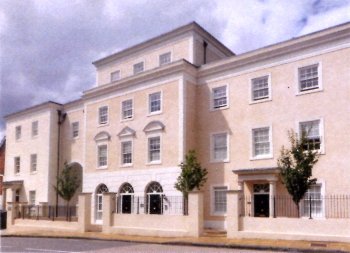Architectual Style - TrustNews Sept 17
John Hearn’s article in the July edition of TrustNews was an eloquent exposition of his personal feelings about architectural style. While l must respect his preference for a particular kind of architecture, l have to disagree with the reasoning he uses to turn this into a theory with universal authority.
The views he expresses have been common currency in the architectural profession since about the middle of the last century. Since then, there has been some confusion in how the style is described. It is often called ‘modern’ or ‘contemporary architecture’, which implies that it is something exclusively right for the present time. This is a deliberate attempt to suggest that anything else is inappropriate for the present day and so ‘not authentic’. The style to which it refers, however, is more properly known as ‘Modernism’, a philosophy that emerged in the early twentieth century that specifically sought to reject the past. It has always been supported by a series of fallacies, some of which John Hearn repeats.
The first suggests that people in the past thought about architecture in the same way as supporters of Modernism. The ideas that you should be quite different in order to be ‘contemporary’, or any concept that you might not be ‘authentic’, were unknown a hundred years ago. Up to then and for the previous four centuries, new architecture almost always referred in some way to a chosen period of the past. Serle’s House takes its detail from ancient Rome. The Guildhall explicitly refers to medieval town halls. The City Museum aspires to Tudor Englishness. I could go on. None of these are fakes, all were authentic when they were built and remain authentic to their time. If something similarly traditional is built now it cannot help but be an authentic reflection of attitudes today. This is an unavoidable fact, regardless of anyone’s taste or theory.
The second is to claim that current regulations necessitate a break with the past and make traditional proportions impossible The existence of modern traditional buildings in Winchester and elsewhere demonstrates that not only can they be built but that they can be functional and economic. And what is to stop the scale, proportions and details from being appropriate? True, sometimes bad architects get things wrong in any style but to get it right only requires artistry and scholarship.
The third is to say ‘traditional styles’ only means imitation or fakes. This is to misunderstand tradition. To explain this, I will use the example of the British parliament. The modern House of Commons is politically completely different from the original royal advisory assembly elected by a few property-owning males. Nonetheless, it jealously guards its ancient traditions: the shape of the chamber, voting procedure, Black Rod, and so on. These are not attempts to turn back the clock and they do not stop the functioning of a modern government. It is these traditions that give it, and indeed our nation, their identity. Traditions move forward but retain explicit references to their past. Without them we would all lose our identity.
And it is this identity that is so important for an ancient city such as Winchester. I agree with much of John Hearn's analysis of the streets and spaces of the city. But we must ask if his proposition, that the identity of the place would be maintained if the buildings that form these streets and spaces were all to be like the examples he admires and illustrates, is correct? These may indeed be fine buildings in their own right but, individually or if we were to have a street of them, would we guess we were even in the south of England, let alone England? And this is a characteristic of Modernism; it was once called ‘the International Style’, and so it remains.
Of course, all the buildings in Winchester will not be replaced with Modernist buildings but, if this is presented as the only valid style and this is enforced by some expert group on the basis of an elite theory that this is the only way to be authentic, in time the identity of the city will be fatally eroded and this would be quite wrong. If a landowner wants a Modernist building, there is most definitely a place for it, some good examples add vitality and diversity to any town. But l doubt very much that most of the people of Winchester want this kind of architecture to be the only way to develop the city. Good traditional architecture is not copying or attempting to re-create the past, it moves forward in the present with the past and is a vital part of modern British architecture. Let us not imagine that being modern or of our time excludes tradition or means only one architectural style.

Sheridan House, Winchester,
by the author, authentically 1980s

New development, Southgate Street,
by Huw Thomas, modern contextual architecture
